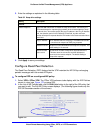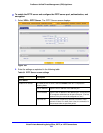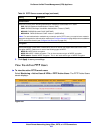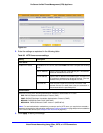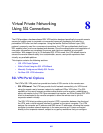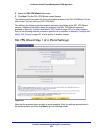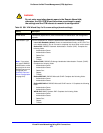
337
8
8. Virtual Private Networking
Using SSL Connections
The UTM provides a hardware-based SSL VPN solution designed specifically to provide remote
access for mobile users to corporate or commercial resources, bypassing the need for a
preinstalled VPN client on their computers. Using the familiar Secure Sockets Layer (SSL)
protocol, commonly used for e-commerce transactions, the UTM can authenticate itself to an
SSL-enabled client, such as a standard web browser. Once the authentication and negotiation of
encryption information are completed, the server and client can establish an encrypted
connection. With support for up to 13 dedicated SSL VPN tunnels, the UTM allows users to
access the remote network easily for a customizable, secure, user portal experience from
virtually any available platform.
This chapter contains the following sections:
• SSL VPN Portal Options
• Build a Portal Using the SSL VPN Wizard
• Manually Configure and Modify SSL Portals
• For More SSL VPN Information
SSL VPN Portal Options
The UTM’s SSL VPN portal can provide two levels of SSL service to the remote user:
• SSL VPN tunnel. The UTM can provide the full network connectivity of a VPN tunnel
using the remote user’s browser instead of a traditional IPSec VPN client. The SSL
capability of the user’s browser provides authentication and encryption, establishing a
secure connection to the UTM. Upon successful connection, an ActiveX-based SSL VPN
client is downloaded to the remote computer to allow the remote user to join the
corporate network virtually.
The SSL VPN client provides a point-to-point (PPP) connection between the client and
the UTM, and a virtual network interface is created on the user’s computer. The UTM
assigns the computer an IP address and DNS server IP addresses, allowing the remote
computer to access network resources in the same manner as if it were connected
directly to the corporate network, subject to any policy restrictions that you configure.



